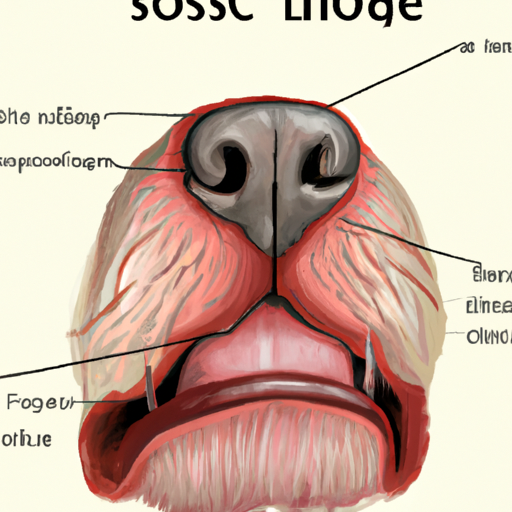Hello, dear caregiver! As someone who takes care of dogs, you must have always wondered about the peculiarities of your furry friend’s anatomy, especially that moist, cool and unique nose. In this guide, we’ll dive deep into the fascinating world of the canine nose, its structure, function, and incredible sensing capabilities.
1. The Structure of a Dog’s Nose
The exterior of a dog’s nose, often referred to as the ‘nose leather,’ is made up of specialized skin cells. These cells contribute to the unique texture and pattern of a dog’s nose, similar to how human fingerprints are formed. The following table illustrates the basic components of a dog’s nose:
| Component | Description |
|---|---|
| Rhinarium | The moist, naked surface around the nostrils. |
| Nostrils (Nares) | The two openings which allow air passage. |
| Nasal Planum | The flat part of the nose in front of the nostrils. |
| Philtrum | The vertical groove in the middle of the nose. |
2. The Function of a Dog’s Nose
A dog’s nose is more than just a tool for sniffing; it’s a highly sophisticated sensory organ. It’s capable of detecting a myriad of scents, even ones that humans are oblivious to.
- Moisture Retention: The moistness of a dog’s nose helps to capture scent particles in the air. This amplifies their sense of smell, allowing them to detect even the faintest odors.
- Heat Sensing: Recent studies suggest that dogs can also detect minute changes in temperature through their noses, which adds another layer to their remarkable sensory abilities.
- Directional Tracking: The dog’s nostrils can move independently, helping them to determine the direction of a particular smell.
3. The Incredible Sensing Capabilities of a Dog’s Nose
Did you know that a dog’s sense of smell is estimated to be between 10,000 to 100,000 times more sensitive than ours? The reason behind this lies within their noses.
- They have between 125 million to 300 million scent glands, compared to our mere 5 million.
- The part of their brain that analyzes smells is 40 times larger than ours, proportional to the brain size.
4. Maintaining Your Dog’s Nose Health
As a caregiver, it’s important to ensure your dog’s nose is healthy. A dry or cracked nose can be a sign of various health issues. Here are some tips to take care of your dog’s nose:
- Regularly check your dog’s nose for any signs of discomfort, like changes in color, swelling, or excessive dryness.
- Hydrate your dog’s nose using vet-approved balms or creams.
- Protect your dog’s nose from extreme weather conditions.
5. Common Myths About a Dog’s Nose
There are many myths about a dog’s nose. For instance, many believe that a warm, dry nose indicates illness, while a cold, wet nose signifies health. However, a dog’s nose can change from wet to dry several times over the day. Only if the dryness persists or is accompanied by other symptoms should it be a cause for concern.
FAQs
-
Why is my dog’s nose wet?
A dog’s nose is typically wet due to the production of a thin layer of mucus that aids in scent detection. Licking their nose also helps in keeping it moist. -
What does it mean when my dog’s nose is dry?
A dry nose doesn’t necessarily mean your dog is sick. It can be dry due to weather, allergies, dehydration, or even after a good night’s sleep. -
Why does my dog’s nose change color?
A change in nose color can be due to various reasons, including age, weather, or certain health conditions. If your dog’s nose color changes dramatically or suddenly, it’s best to consult your vet. -
How can I tell if my dog’s nose is unhealthy?
Signs of an unhealthy nose include persistent dryness, cracking, bleeding, unusual discharge, or changes in color or texture. If you observe any of these signs, it’s best to seek veterinary advice. -
Can I apply lotion to my dog’s dry nose?
Yes, but only use products specifically designed for dogs. Human lotions may contain ingredients that are harmful if ingested by your dog.
In conclusion, your dog’s nose is a remarkable organ, equipped with advanced sensing capabilities that we humans can only dream of. As a caregiver, appreciating and taking care of this unique feature will ensure your furry friend can continue to explore the world one sniff at a time.



